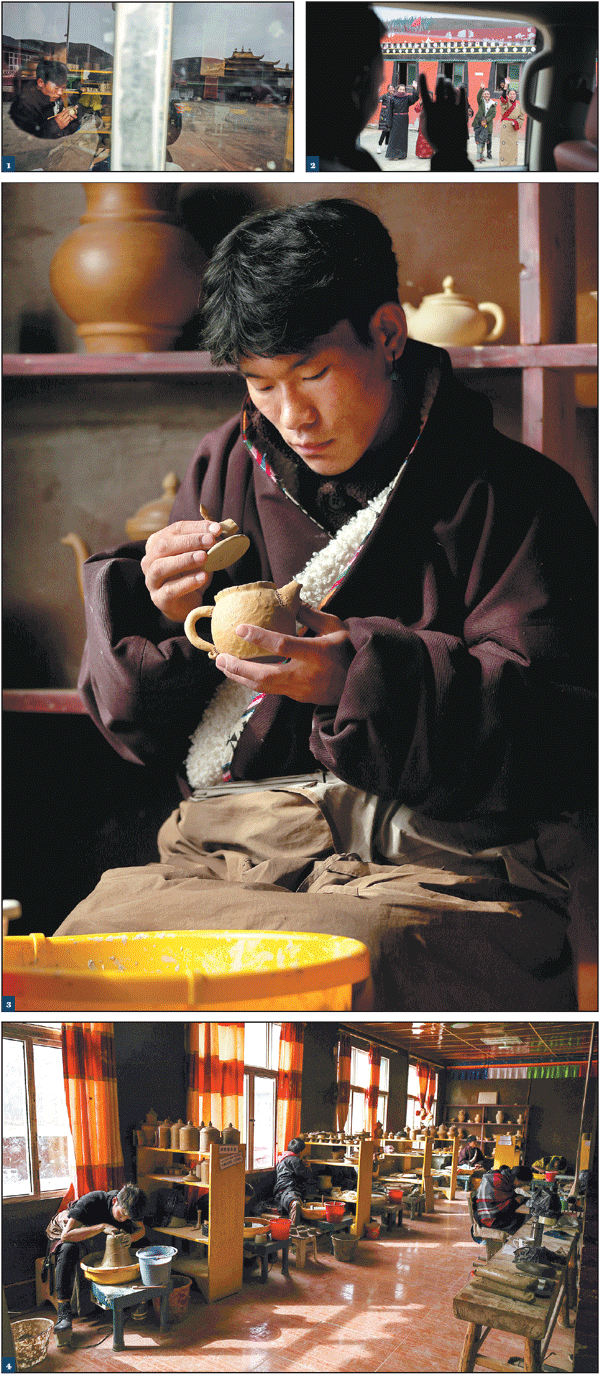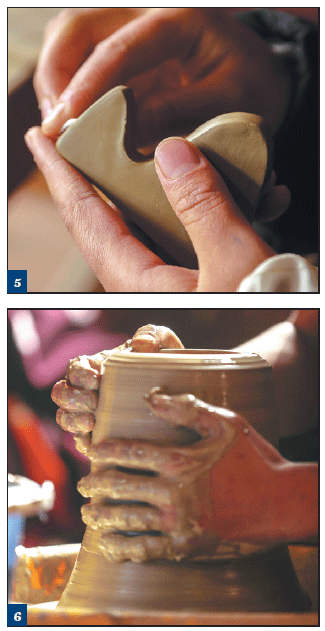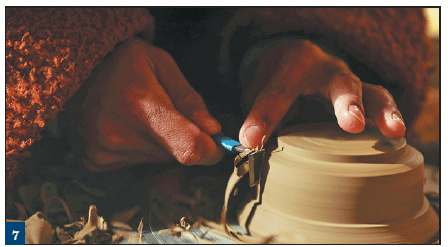Getting back to black
Zamtang county and a dedicated group of inheritors are striving to preserve the traditional art of Jambhala Tibetan pottery
The development of Jambhala (God of Wealth) Tibetan pottery has a history of nearly 2,000 years and is an indispensable part of Tibetan culture.
Since ancient times, Zamtang county in Sichuan province has made black pottery. The clay is made from the soil taken from snow-capped mountains at an altitude of 4,000 meters above sea level. The black pottery, with its distinctive local characteristics and patterns, is also on the brink of disappearing. In a bid to pass down the knowledge to the next generation, the inheritor Choi Wang established the Jambhala Tibetan Pottery Training Institute with the help of the Zamtang county government, which gathers all of the local pottery masters to promote and preserve the art form.
Over time, the techniques for making the pottery have developed and matured, as has the aesthetic of the items made using them. Artisans taking up the medium have injected new life into the pottery through exquisite design.
In recent years, Zamtang county issued a directive to promote cultural innovation and development, which allocates millions of yuan in subsidies each year for cultural institutes, supporting the performance of Tibetan operas, along with the production of thangka (Tibetan art of scroll painting), Tibetan incense, Tibetan tea, Tibetan medicine, as well as stone carving, pottery, traditional costume and folk songs in northwestern Sichuan.
Now 27 institutes have been built, and at present, there are more than 3,000 farmers and herdsmen in the county engaged in preserving intangible cultural heritage, learning folk skills, making cultural products, increasing the income of the locals, promoting the integration and development of cultural tourism, and establishing the cultural industry as the most important economic driver in the county.
Photos by Wang Xiwei
For China Daily
|
1. A trainee devotes himself to making pottery jars at the Jambhala Tibetan Pottery Training Institute. 2. The trainees bid farewell to tourists. 3. A trainee works on an irregularshaped Tibetan teapot. 4. The trainees at a pottery class. 5. A trainee makes a chopstick holder. 6. 7. The clay used to create the pottery is collected from mountains at an altitude of 4,000 meters above sea level. |
(China Daily Global 11/11/2019 page15)





















